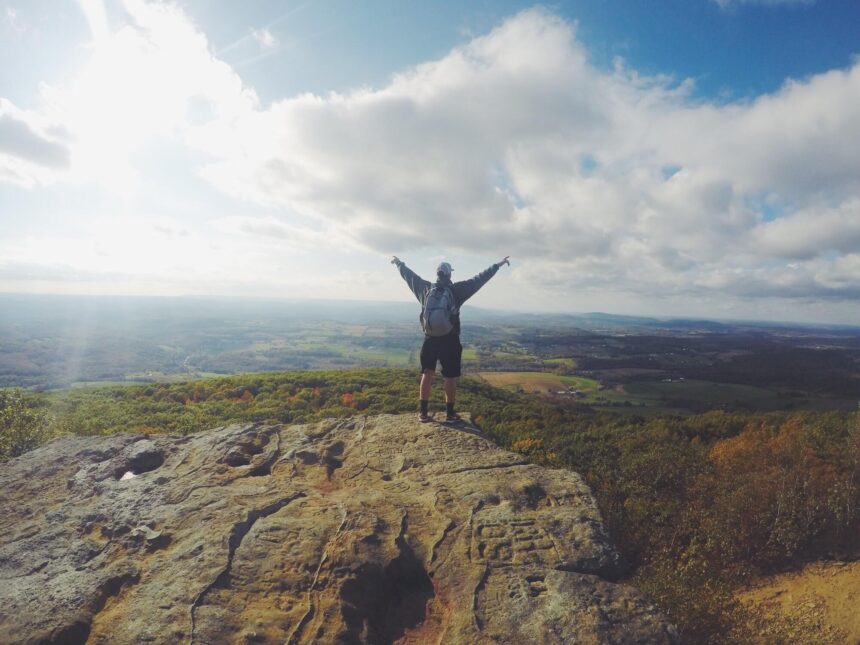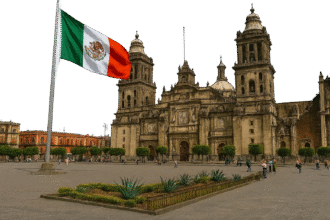Have you ever dreamed of reaching the top of a mountain? The feeling of standing above the clouds is exciting.
- Choosing the Right Boots
- Dressing in Layers for Comfort
- Carrying a Good Backpack
- Staying Safe with Proper Safety Gear
- Keeping Hydrated with a Hydration Pack
- Bringing Enough Food for Energy
- Navigating with a Map and Compass
- Protecting Yourself from the Sun
- Using Trekking Poles for Support
- Packing a Sleeping Bag and Tent for Overnight Trips
- Knowing the Importance of Headlamps and Extra Batteries
- Preparing for Emergency Situations
- Feeling Inspired by the Adventure
- Get Ready for Your First Climb Using This Guide
But before you start, you need the right gear. Having the best equipment will keep you safe and make your climb enjoyable. This guide will help you choose what you need for your first mountain climbing trip.
By the end, you will know how to pack like a pro and feel ready for your adventure! Let’s get started!
Choosing the Right Boots
Your feet do most of the work when you climb. Wearing the wrong boots can cause blisters and pain. Choose boots that are sturdy, waterproof, and comfortable.
They should support your ankles and have good grip to prevent slipping. Break in your boots before the trip. Wear them on short hikes to make sure they fit well.
Dressing in Layers for Comfort
The weather in the mountains can change fast. It can be warm at the bottom and freezing at the top. Dressing in layers will help you stay warm or cool.
Begin with a base layer that wicks sweat away from your skin. Add a middle layer, such as a fleece jacket, to provide warmth and insulation.
The outer layer should be waterproof and protect you from wind and rain. Always pack an extra layer in case it gets colder than expected.
Carrying a Good Backpack
A strong backpack will hold all your gear. Choose one that is lightweight but big enough to carry your essentials. It should fit comfortably on your back and not cause pain.
Look for a backpack with padded straps and waist support. This will help you carry the weight easily. A good backpack will also have pockets to keep your items organized.
Staying Safe with Proper Safety Gear
Safety should be your top priority. A helmet is important to protect your head from falling rocks. A harness and rope are needed if you are climbing steep areas.
If you are using climbing gear, learn how to use it before your trip. A first aid kit is also necessary.
It should have bandages, pain relievers, and antiseptic wipes. Knowing basic first aid can be very helpful in case of an injury.
Keeping Hydrated with a Hydration Pack
Climbing can make you sweat a lot. Your body needs water to stay strong. A hydration pack is better than carrying a bottle because you can drink without stopping.
Choose a pack that can carry enough water for the whole trip. Some packs also have extra space for snacks and small items.
Bringing Enough Food for Energy
Climbing takes a lot of energy. You need to eat the right food to keep going. Pack lightweight and high-energy snacks like nuts, protein bars, and dried fruit. Avoid heavy foods that will make you feel slow.
If your climb takes a whole day, bring a packed meal. Eating small snacks along the way will keep your energy levels high.
Navigating with a Map and Compass
It is easy to get lost in the mountains. A map and compass will help you find your way.
Even if you have a GPS, always carry a physical map. Batteries can die, but a paper map will not fail you. Learn how to read a map before your trip. This will help you stay on the right path.
Protecting Yourself from the Sun
The sun can be harsh at high altitudes. You need to protect your skin and eyes. Wear sunscreen to prevent sunburn. A hat will keep the sun off your face. Sunglasses with UV protection will shield your eyes. The sun can also make you dehydrated, so drink water often.
Using Trekking Poles for Support
Trekking poles help you balance and reduce strain on your legs. They make climbing easier, especially on steep or rocky trails.
Choose poles that are lightweight and adjustable. Using trekking poles can also help prevent knee pain.
Packing a Sleeping Bag and Tent for Overnight Trips
If your climb lasts more than a day, you will need a sleeping bag and a tent. A warm sleeping bag is important because nights in the mountains can be very cold. A lightweight tent will protect you from wind and rain.
Choose a tent that is easy to set up. Packing a small pillow can also help you sleep better.
Knowing the Importance of Headlamps and Extra Batteries
Climbing can take longer than expected. If it gets dark, you will need a light to see the trail. A headlamp keeps your hands free while you climb.
Always carry extra batteries in case your headlamp runs out of power. A small flashlight can also be useful.
Preparing for Emergency Situations
Even the best climbers face unexpected problems. A whistle can help you signal for help if you get lost. A multi-tool or knife can be useful for fixing gear or cutting rope.
Always tell someone about your climbing plan. This way, they will know where to find you if something goes wrong. Carrying an emergency blanket can help keep you warm if you need to stay overnight.
It is also smart to pack extra food and water in case your climb takes longer than planned. A small waterproof notebook and pen can be useful for writing down important information.
Knowing basic survival skills, like how to start a fire or find shelter, can make a big difference. Being prepared for emergencies will give you confidence on your climb.
Feeling Inspired by the Adventure
Climbing is an exciting experience. Many people dream of reaching the top of a famous mountain. For example, climbing mount Kilimanjaro is a great challenge that many beginners take on.
It requires determination, physical strength, and proper planning. Training before the climb can help build stamina and confidence.
With the right gear and preparation, you can enjoy a safe and successful climb. The sense of achievement when you reach the top is worth all the effort.
Get Ready for Your First Climb Using This Guide
Now that you know what gear you need, you are ready to start your adventure! Having the right equipment will help you stay safe and enjoy your climb. Choose your gear carefully and test it before your trip.
When you are prepared, you will feel more confident on the mountain. Remember to start with smaller climbs before taking on bigger challenges.
Every climb will teach you something new and make you a better adventurer. Enjoy the journey and take in the amazing views!
Did you like this guide? Great! Browse our website for more!












